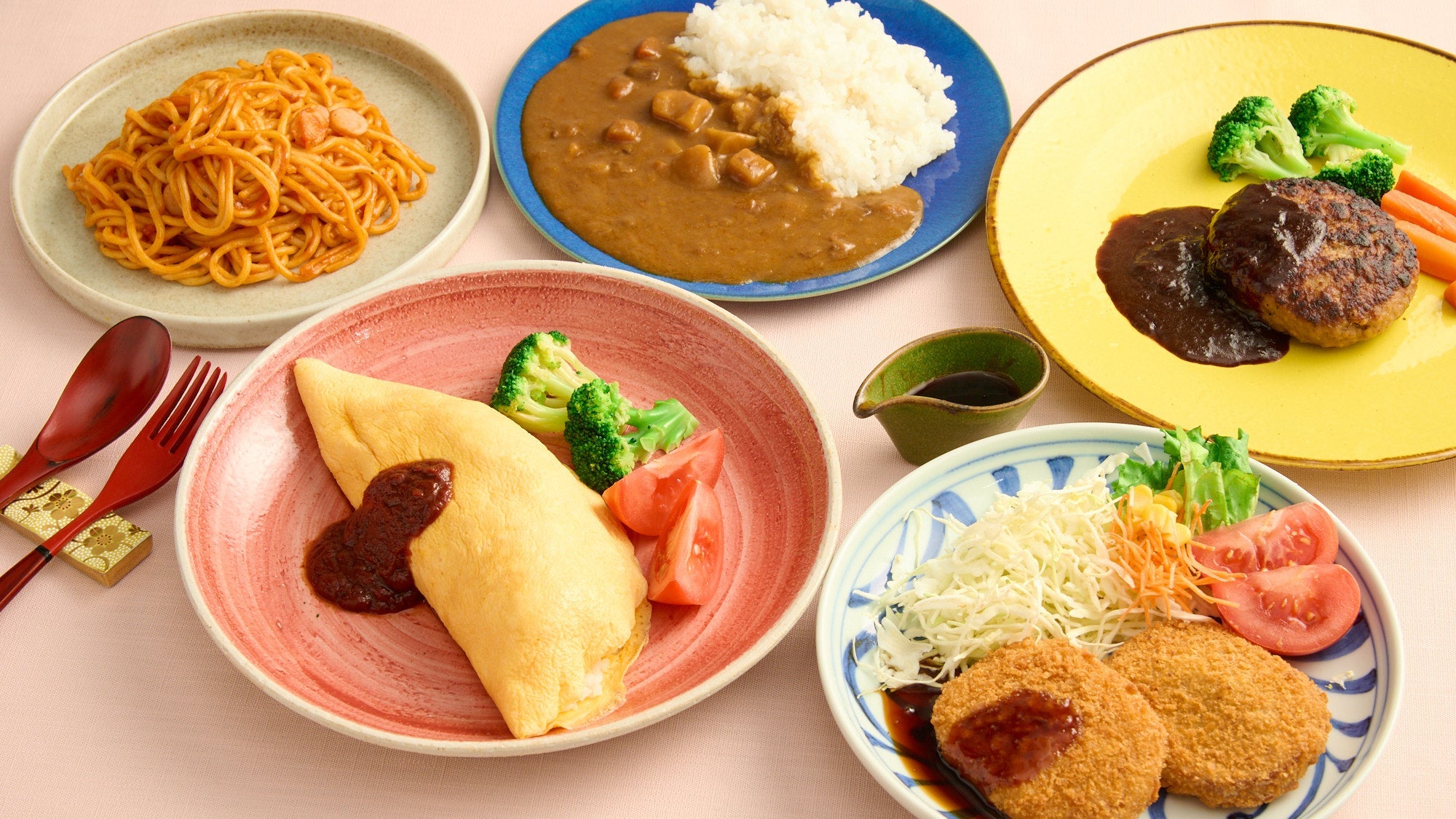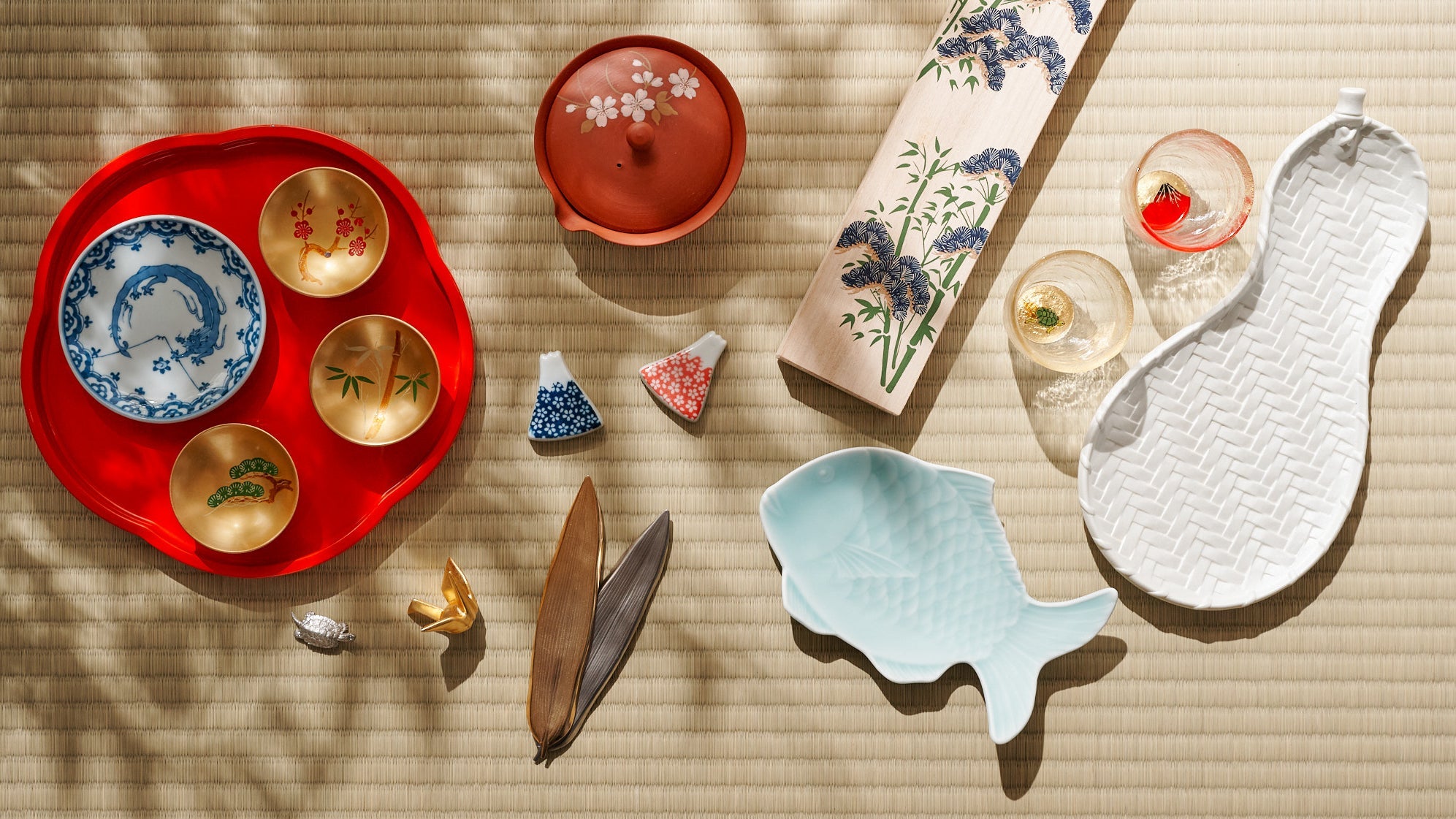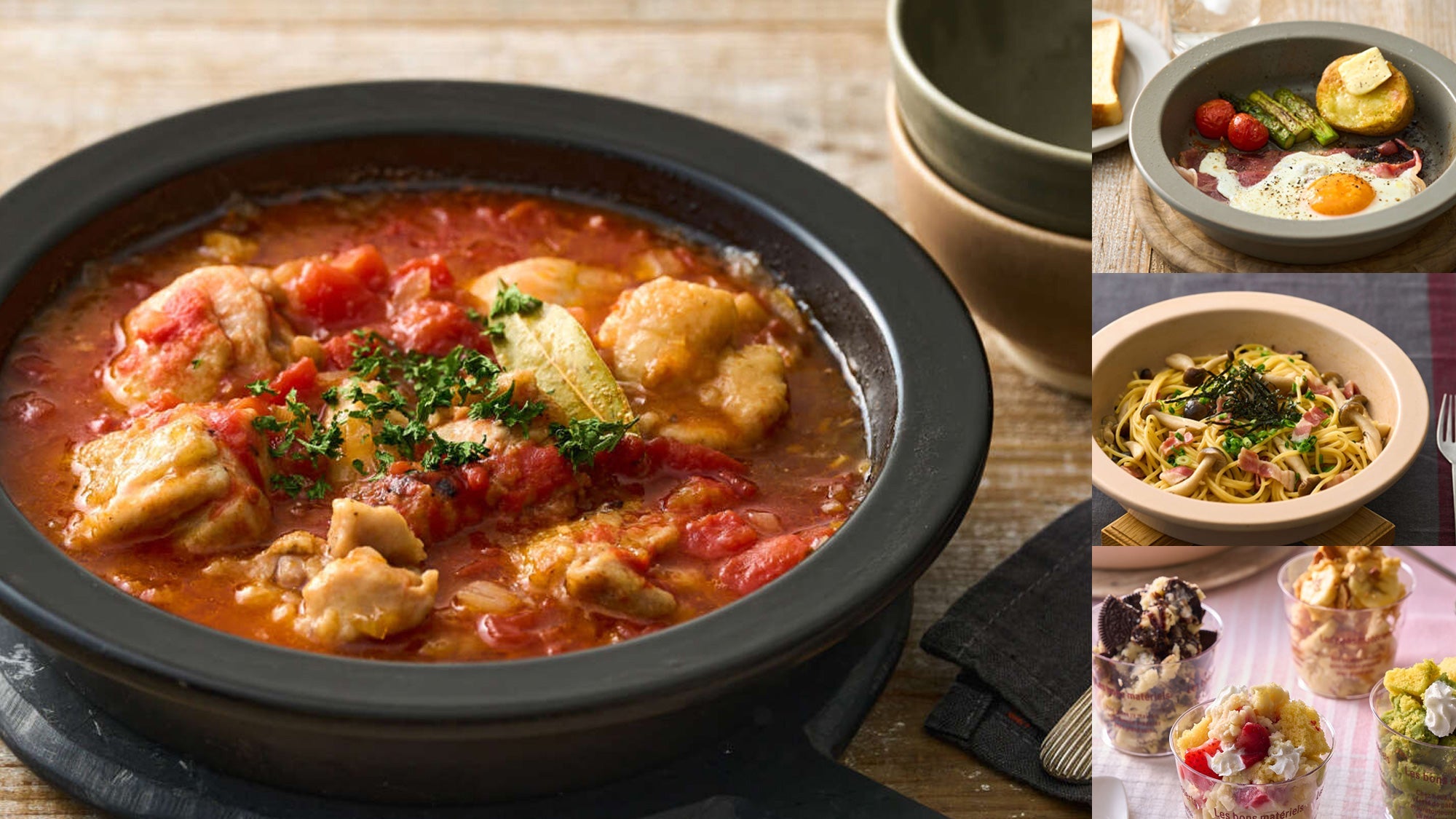
La sorprendente historia de Yoshoku: comida occidental japonesa
De Team MUSUBI
posible que hayas oído hablar de washoku, o “cocina japonesa,” pero ¿qué hay de yoshoku?
Literalmente "cocina occidental", yoshoku es un tipo particular de comida occidental japonesa. Aunque los platos yoshoku se basaron originalmente en alimentos de Inglaterra, Francia, Estados Unidos y otros países occidentales, el yoshoku ha adquirido desde entonces un carácter japonés propio. Omurice, naporitan, korokke—sería difícil encontrar estos platos exactos en cualquier menú americano o europeo. Y, sin embargo, son comunes y muy apreciados en Japón. Sigue leyendo para probar una muestra de esta comida clásica, servida con pequeños fragmentos de las historias que hay detrás de ellos.
Tabla de contenidos
¿Qué es Yoshoku?
La cultura alimentaria tiende a seguir los acontecimientos mundiales. Uno de los ejemplos más llamativos de esto es la occidentalización repentina que Japón experimentó tras ser forzosamente abierto al Occidente con la llegada del comodoro Perry de Estados Unidos en 1853 d.C. Esto y la Restauración Meiji (1868 d.C.) desataron un cambio político sin precedentes, un cambio cultural y, en última instancia, cambios en las formas en que se consumía la comida en todo Japón.
La afluencia de alimentos extranjeros y la adopción de cocinas foráneas en Japón fue lo que llevó a la creación del yoshoku, ya que los nuevos platos occidentales introducidos se adaptaron con ingredientes y técnicas japonesas. Durante la era Meiji (1868–1912 d.C.), surgieron restaurantes de estilo occidental en ciudades como Tokio. Los platos inspirados en Europa comenzaron como un lujo para quienes podían permitírselos, pero a medida que avanzaba la era Meiji, el yoshoku también llegó a las clases trabajadoras.
No fue la primera vez que Japón adoptó alimentos de otros países. El ramen, por ejemplo, fue traído desde China, mientras que el tempura fue influenciado por la comida portuguesa, traída por comerciantes junto con armas. A diferencia del ramen y el tempura, sería difícil encontrar yoshoku en el menú de un restaurante japonés en el extranjero. Y, sin embargo, estos platos han entrado completamente en la conciencia japonesa, apareciendo en la cocina casera, en restaurantes, y kissaten—Cafés japoneses conocidos por su café, ambiente retro y reconfortante yoshoku.
Descubre cinco de los platos yoshoku más conocidos y queridos, y aprende la sorprendente historia detrás de esta comida única.
Arroz con curry
El arroz con curry, como su nombre indica, es mitad curry con salsa, mitad arroz blanco esponjoso. Un alimento básico de la cocina casera, los cafés y las comidas para grupos grandes de personas, el arroz con curry japonés se prepara típicamente con polvo de curry o roux de curry, cocido a fuego lento con carne y verduras, y harina como agente espesante. La zanahoria y la cebolla casi siempre están presentes, y las papas y la carne de res son adiciones comunes. Los niveles de picante varían desde amakuchi, “dulce,” es decir, no picante, a karakuchi, "picante", pero todos los niveles tienden a contener una dulzura característica. Servido en un plato grande y comido con cuchara, el arroz con curry es reconfortante y sustancioso, perfecto para cuando necesitas un levantón acogedor.

Pero como puedes notar en la descripción, el arroz con curry es bastante distinto de los curris indios. Entonces, ¿de dónde vino y cómo llegó a Japón?
La colonización británica de la India llevó el curry a Inglaterra, que le dio su propio giro al plato, desarrollando el polvo de curry y añadiendo harina. Después de que Japón se abriera a Occidente, enviados japoneses, samuráis e investigadores comenzaron a encontrarse con esta variedad anglicanizada de curry en los barcos que viajaban entre Europa y América. Pero la principal chispa para su adopción generalizada en Japón vino con los esfuerzos de Japón por modernizar rápidamente su ejército estudiando las prácticas de las potencias occidentales.
Esto incluía lo que comían los soldados occidentales. La marina japonesa, en particular, desempeñó un papel importante aquí, ya que los cocineros navales descubrieron que el curry era una buena comida para el comedor de los barcos. Con largos días y semanas en el mar, el equilibrio nutricional era especialmente importante, aunque el espacio para los suministros era limitado. El pequeño número de ingredientes del curry aún proporcionaba a los marineros suficientes nutrientes para mantenerlos saludables, mientras que el polvo de curry facilitaba la preparación del plato en grandes cantidades.
El arroz con curry comenzó a aparecer en restaurantes informales, cafeterías y residencias estudiantiles a principios del siglo XX, y los miembros del ejército también llevaron su conocimiento del plato a casa. Se convirtió en un elemento común en el menú del almuerzo escolar después de la Segunda Guerra Mundial, y las innovaciones en productos de cocina, como el roux de curry instantáneo en la década de 1960, facilitaron su preparación rápida en casa.
El arroz con curry todavía se sirve comúnmente hoy en día en modernos shokudo (cafeterías), restaurantes familiares, algunos kissaten y tiendas especializadas en curry. Las variaciones incluyen curry udon y curry soba—estas sopas clásicas japonesas sazonadas con un generoso cucharón de curry. Similar en apariencia al arroz con curry está hayashi arroz, que típicamente combina arroz blanco esponjoso con carne estofada y verduras en una demi-glace o salsa similar.

Así que si tienes la oportunidad, prueba el curry japonés con arroz. ¡Obtendrás una cucharada completa de historia culinaria!
Omurice
Lo siguiente en los icónicos platos del menú yoshoku es el omurice. Un acrónimo de "omelette" y "rice" (arroz), está compuesto por arroz frito esponjoso con ketchup cubierto o envuelto en una fina capa de tortilla, y a menudo se corona con ketchup o salsa demi-glace.
Lo leíste bien: el ketchup es un ingrediente clave. El arroz se fríe con ketchup y las verduras y la carne de tu elección. Luego, se coloca una capa delgada de tortilla simple encima o se usa para envolver el arroz frito.
Omurice es un plato favorito de la cocina casera japonesa. A menudo lo verás preparado por el interés romántico en los dramas japoneses, decorado en la parte superior con lindos diseños de kétchup y guisantes. ¡Algo sobre el omurice casero y esponjoso simplemente transmite amor y cuidado!
Para descubrir cómo se desarrolló este plato en Japón, es útil observar sus partes constituyentes. Primero está la tortilla, que parece haber llegado a Japón a través de su contacto con Inglaterra a finales del siglo XIX. Pero luego viene la parte más interesante: el arroz.

El arroz del omurice comenzó como arroz con pollo: un arroz salteado al que se le añade pollo. Su nombre en japonés, influenciado por el inglés, arroz con pollo, sugiere su origen: este plato, también, fue influenciado por recetas británicas. ¿Pero dónde entra el ketchup?
El pilaf o paella con sabor a azafrán ya se había introducido en Japón a principios del período Edo (1603–1868 d.C.). Pero el pilaf de pollo fue introducido por Gran Bretaña a principios de la era Meiji. Estas recetas británicas a veces reemplazaban el azafrán, más caro, por tomates. Los libros de cocina yoshoku japoneses a principios de 1900 difundieron recetas de arroz con pollo que incluían tomates, y finalmente una receta que sugería el ketchup como sustituto de los tomates fue difundida por populares revistas femeninas japonesas a finales de la década de 1920.
algún momento alrededor de la década de 1920, un plato precursor de arroz blanco envuelto en una tortilla parece haberse combinado con esta versión de arroz con pollo frito con salsa de tomate, creando así lo que hoy conocemos como omurice.
Por cierto, dos restaurantes diferentes en Tokio y Osaka afirman haber inventado el plato. Pero en cualquier caso, podemos decir que el omurice estaba firmemente establecido en los libros de cocina yoshoku en Japón para la segunda mitad de la década de 1920.
Hamburguesa japonesa
El siguiente plato nos lleva al otro lado del Pacífico. La hamburguesa japonesa, a menudo llamada Hamburguesa japonesa, es conocida en Japón como hanbāgu. Es muy similar a una hamburguesa o a un filete de hamburguesa al estilo americano, excepto que se sirve sin pan y con arroz. Cubierto con una demi-glace o una salsa similar, a menudo una combinación de kétchup y salsa Worcestershire, el filete de hamburguesa japonés es otro clásico de los kissaten y un favorito de la cocina casera.
La hamburguesa japonesa fue traída a Japón por los estadounidenses, quienes a su vez la obtuvieron de inmigrantes alemanes. Pero a diferencia del arroz con curry y el omurice, no fue hasta después de la Segunda Guerra Mundial que la hamburguesa se popularizó en Japón. Antes de eso, la carne picada se veía en forma de bolas, similar a las albóndigas. Pero después de la guerra, los soldados estadounidenses estacionados en Japón como parte de la ocupación aliada trajeron consigo su amor por las hamburguesas y el filete Hamburg. Esto, según escritores japoneses de la época, fue adoptado por los chefs en Japón.

El toque japonés único del hambag es el esponjoso arroz blanco japonés que acompaña al filete de hamburguesa. Absorbe los jugos y las salsas, haciendo que la comida sea deliciosa y saciante. Como en muchas creaciones yoshoku, el arroz es tan importante como la carne. También es único en Japón que la carne del filete de hamburguesa japonés moderno sea generalmente una combinación de carne molida de res y cerdo.
Naporitan
Naporitan, también conocido como espagueti napolitano o espagueti neapolitano, es casi un espagueti típico con salsa de tomate, pero no del todo. El ingrediente que diferencia la salsa de este plato es el kétchup.
Al igual que la hamburguesa estilo steak, el espagueti napolitano fue introducido en Japón por soldados estadounidenses después de la Segunda Guerra Mundial. La historia de su origen se remonta al New Grand Hotel de Yokohama. El hotel fue requisado por el GHQ y utilizado como cuartel para oficiales hasta 1952. Durante ese tiempo, los chefs principales notaron que los soldados estadounidenses comían espagueti sazonado con sal, pimienta y kétchup de tomate, alimentos fácilmente conservables que se mantenían bien, lo que los hacía perfectos como suministros militares. Pero cuando el GHQ devolvió el hotel a Japón, la cocina se quedó con mucho espagueti extra. Los chefs copiaron la receta de espagueti que vieron preparar a los estadounidenses, pero la mejoraron con tomates frescos y pasta de tomate, acorde con su estatus de hotel de alta categoría.

La cocina yoshoku del Hotel New Grand tendió a difundirse y volverse popular en todo Japón, pero los tomates aún no eran fáciles de conseguir, lo que dificultaba que los chefs de los restaurantes yoshoku habituales imitaran la receta del hotel. Por esta razón, restaurantes como el Center Grill de Yokohama y otros presentaron una versión de napolitan que usaba kétchup en su lugar.
Esta es la versión que ha conquistado el corazón del pueblo japonés. Continúa siendo popular en todo el país, destacándose por la dulzura del kétchup y su estilo de cocina rápido y sencillo. Aunque a primera vista pueda parecer familiar para los occidentales, tiene un sabor y un carácter propios.
Como un elemento básico de los cafés kissaten, combina naporitan con una soda de crema de melón para una experiencia verdaderamente japonesa.
Korokke: Croquetas Japonesas
Y eso nos lleva a nuestro último elemento del menú: korokke, o la croqueta japonesa. Los rellenos de korokke varían, pero el más común es una combinación de papa, carne molida de res o cerdo, y cebolla. Estos ingredientes se machacan juntos, se moldean en una hamburguesa, se empanizan con panko migas de pan, y fritas hasta alcanzar una perfección dorada. Los korokke a menudo se sirven con una salsa oscura y dulce-salada, como la salsa tonkatsu, pero las preferencias varían.

Las croquetas japonesas se originan de las croquetas francesas, que fueron traídas por primera vez a Japón durante la era Meiji y servidas en Rokumeikan, la casa de huéspedes estatal para visitantes extranjeros. Pero ahí es donde la receta del korokke se desvía. Lo que se introdujo desde Europa fueron croquetas de crema, hechas con salsa bechamel y verduras, carne o pescado picados. Pero la leche y los productos lácteos no eran comunes en Japón en ese momento, lo que hacía difícil replicar las croquetas francesas. Las papas, por otro lado, eran fáciles de conseguir. El resultado fue la croqueta rellena de papa que todavía vemos y amamos hoy en las tiendas de comestibles y tiendas de bento japonesas.
Así que esos son cinco famosos platos yoshoku, y los acontecimientos mundiales que los impulsaron a formar parte de la cultura culinaria única de Japón. Si visitas Japón, pruébalos, o intenta prepararlos en casa para una experiencia culinaria de fusión.















Dejar un comentario
Este sitio está protegido por hCaptcha y se aplican la Política de privacidad de hCaptcha y los Términos del servicio.